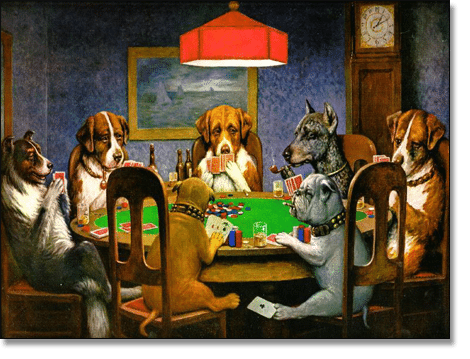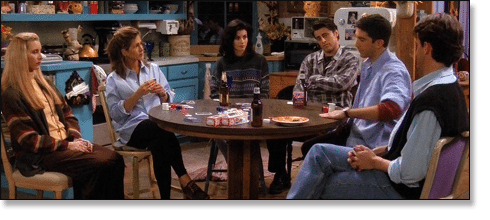Managing the game time of a Texas Hold’em Poker tournament
Managing the game time of a Texas Hold’em Poker tournament
It’s Sunday night and you’ve got the mates round for your weekly night of beers and poker – because let’s face it, you’re not ready for the weekend to end just yet.

Below are some of the key guidelines which will help manage the duration of the game and make the night all the more enjoyable. Often, poker games among friends run overtime – you start at 9:00pm but don’t finish until 2:30am, and now you’re dreading the 8:30am wake-up for work that morning. In order to allow your game to finish at a respectable time, you need to establish two important factors: the total value amount of chips each player begins with, and how regularly the blinds increase.
Chip Values and Blinds
This isn’t an exact science – some poker tournaments will naturally finish later than others, but here are some boundaries which should help to manage the duration of the game:
- For a shorter game (approximately two hours) – each player starts with a total value of 2,000 in chips and the blinds go up every 20 minutes.
- For a longer game (approximately four-and-a-half hours) – each player starts with a total value of 10,000 in chips and the blinds increase every 30 minutes.
Chip values: as a general rule, keep your individual chips values four or five times greater than the previous denomination. For example: have $5, $25, $100 and $500 chips.
With the above precincts used as basic guidelines, feel free to tamper with them to see what best works for your group. For instance, you could start with a total value of 5,000 in chips and the blinds could increase every 15 minutes. The values of the blinds aren’t carved in stone, but with the above chip denominations, you could stick to a structure such as the following:
- Level 1: $25 (small) and $50 (big)
- Level 2: $50 (small) and $100 (big)
- Level 3: $75 (small) and $150 (big)
- Level 4: $100 (small) and $200 (big)
- Level 5: $150 (small) and $300 (big)
- Level 6: $200 (small) and $400 (big)
Or:
- Level 1: $10 (small) and $25 (big)
- Level 2: $25 (small) and $50 (big)
- Level 3: $50 (small) and $100 (big)
- Level 4: $100 (small) and $200 (big)
- Level 5: $200 (small) and $400 (big)
- Level 6: $400 (small) and $800 (big)
Continue the pattern for either of the above structures, if need be.
Again, you can fiddle with the amounts and try a couple of different options to see what you like best. Take a couple of 10-minute breaks throughout play, as well. Obviously, if you’re not as concerned about a time limit, you mightn’t want to put in place any concrete restrictions, preferring to make calls based on how the game is progressing.
Buy-ins and Re-buys
Decide on an entry fee which all players are happy to pay, and agree upon who is awarded what at the conclusion of the tournament.

Furthermore, another aspect which directly affects the duration of the game is the re-buy. You should establish whether the group wishes to allow re-buys before commencing play – that is, if a player loses all his/her chips, that player can buy back in the game by placing another entry fee into the total prize pool, in exchange for the starting amount of chips. You have a few options:
- Decide upon a time limit before no-one is allowed to re-buy (for example, within the first 45 minutes you allow as many re-buys as desired);
- Agree on a specific number of re-buys, regardless of the time (usually one or two re-buys);
- Or, a combination of both – for instance, allow two re-buys within the first hour.
Note: by rule of thumb, a full re-buy grants the player the total starting amount of chips, while a half re-buy (for instance, if the buy-in was $20, and the player chooses to re-buy for $10) grants the player half the starting amount of chips.
Following the above guidelines will help to keep the length of the poker game in check so you don’t have to concern yourself with another seven-hour tournament and a five-hour sleep that night.